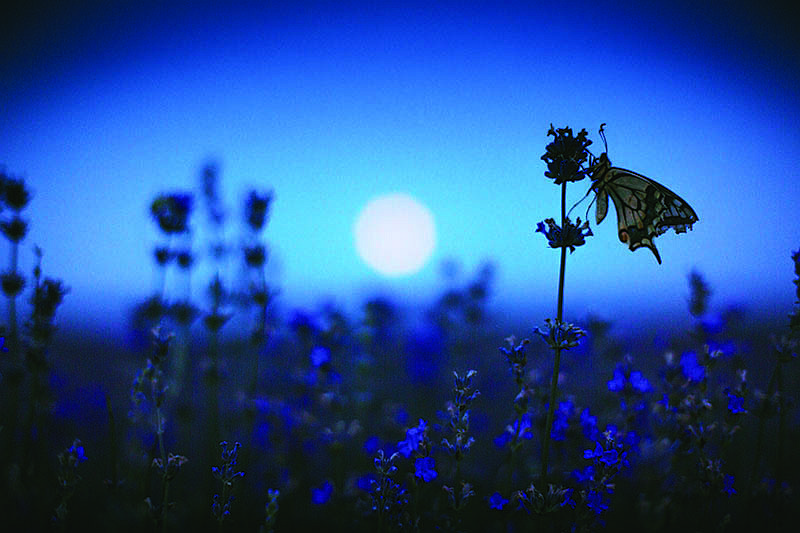Punctuated with flowers that bloom at night, the magical glow of a moon garden is optimal for night owls or those who prefer understated elegance. The key to moon gardens lays in utilizing white- or silver-colored flowers so moonlight will bounce off the petals, which can also yield a monochromatic day look.
"In the summer, especially here in the South, you'll see the Limelight hydrangeas. Any of those big white paniculata hydrangeas make great bones in the background of a moon garden," says Donna Dent with The Barn Nursery. She has dabbled with custom design and specialized in container design for the garden center for the past 21 years.
Commonly, the bright white moonflower, which opens its trumpet-like petals at night, is also a staple, she says. Its citrus-like aroma is almost as enchanting as its Cinderella routine.
Planting flowers that produce more vibrant fragrances at night appeals to other senses for humans and pollinators alike. Dent points to the angel's trumpet. This tall, fluted flower hangs down and releases a fragrance that will attract night pollinators like bats and moths.
"A lot of people just think in terms of bees for their gardens for pollinating," she says. " ... If you get nighttime pollinators, they'll get rid of pests [like mosquitoes]."
For optimal use of the space, she recommends stationing moon gardens in areas that are shaded during the day or spots that don't get much sunlight. By doing this, the moon garden can become the perfect place to set up chairs and some tiki torches to relax as the sun goes down.
Watch where the moon falls to determine the best spots to plant. "You want to set it up so that it will catch natural light at night," says Dent.
As with any garden, layout is key. Tiering and strategically placing plants according to height and depth will make for a more dynamic design. "It doesn't have to be a specific plant. It can be done textually or with color," Dent adds. For example, she recommends the soft hues of the Blue Star juniper shrub, which will also come out in the bright moonlight, and a section of white cupped narcissus, an annual daffodil that blooms in the spring and can grow up to 16 inches tall. The contrast between these two plants will add another level of interest to the garden.
Some of the favorites in her garden are Lenten rose in the winter, daffodils in the spring and angel's trumpet in the summer. She also suggests pansies and violas throughout the year.
Moon gardens can also be the perfect garden for those without much space, like on a balcony porch of an apartment, says Dent. For container moon gardens, she advises to think in terms of "thriller, filler and spiller." A thriller will be a statement plant, a filler gives the pot body, and a spiller trails. She recommends a sweet autumn clematis with white pansies and variegated English ivy.
MOON GARDEN TIPS
* Lay your garden out in tiers. Go asymmetrical in small patches.
* Play with textures.
* Note where the moon falls and plant there if possible. Moon gardens can still be done with ambient light.
* Determine when you want your garden to peak throughout the year by mixing plants and flowers that bloom in various seasons.
